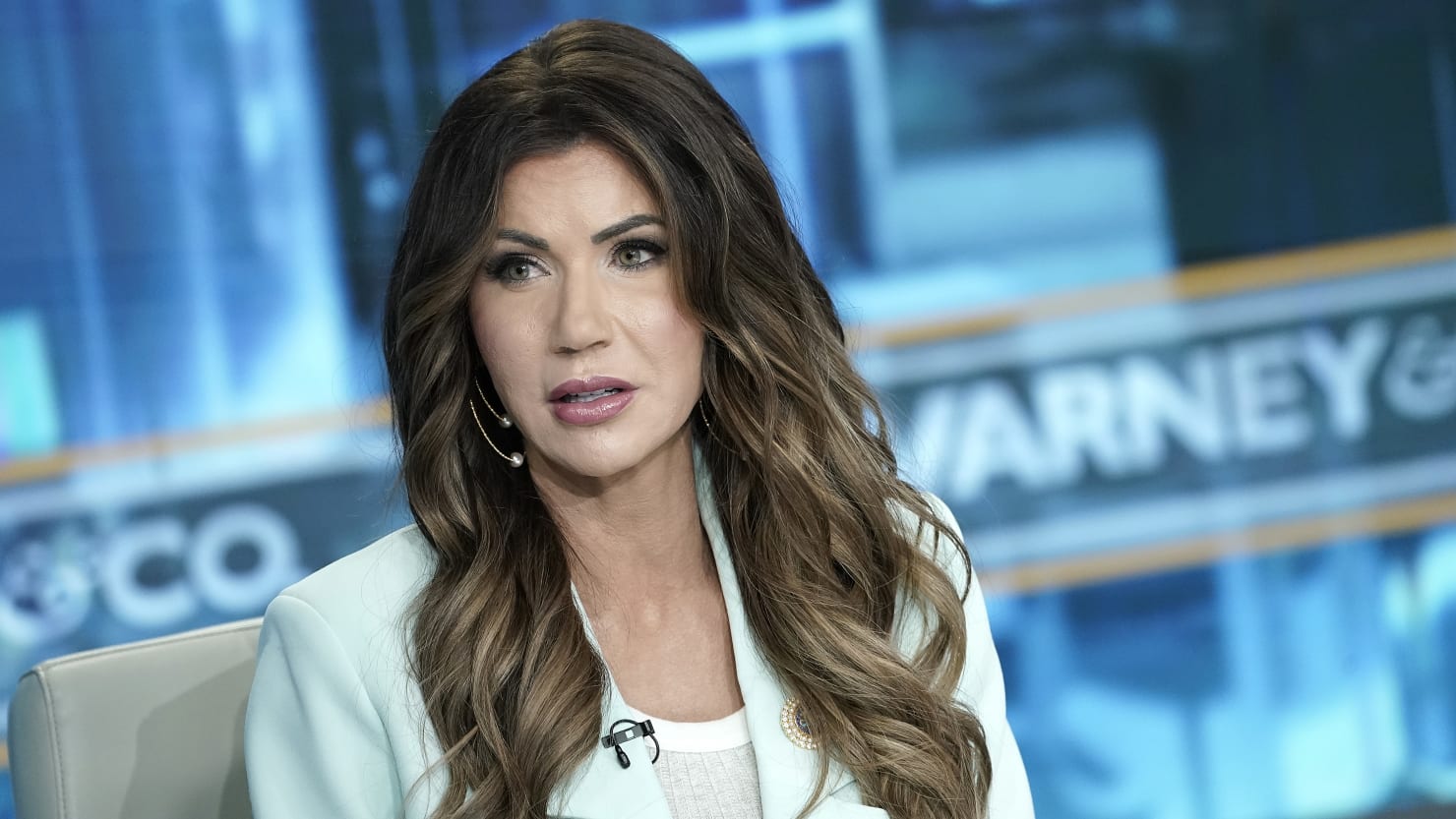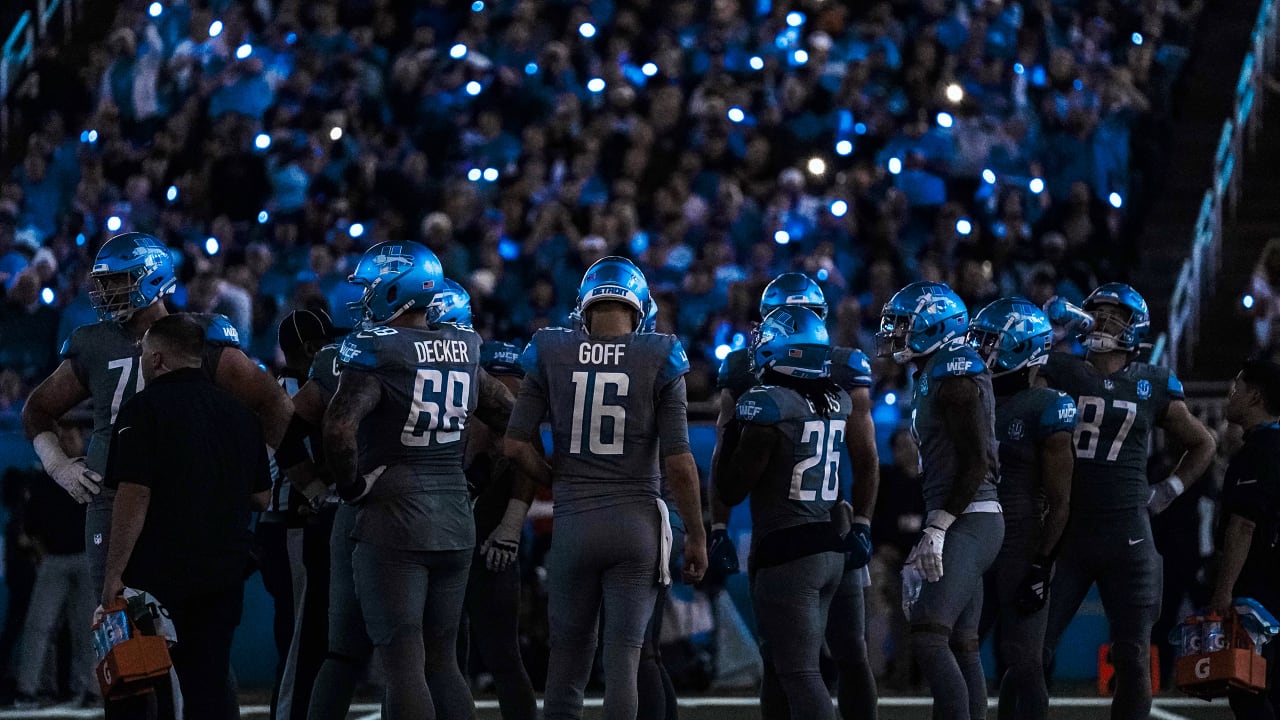South Dakota
Zimmer: South Dakota State's Summit League winning streak is reaching ridiculous levels

BROOKINGS — Saturday’s win over the Omaha Mavericks was the 14th in a row for the South Dakota State women’s basketball team. It was also their 20th of the season, a benchmark they’ve reached in 21 of the last 23 seasons (they won 19 in the other two).
When they visit Denver on Thursday the Jackrabbits will be looking to improve to 13-0 in Summit League play with what would be their 15th straight win.
Impressive, right? Well it’s not even the most impressive streak the Jacks have going right now.
No, that would be the Jackrabbits’ winning streak against conference opponents, which now stands at an embarrassing-for-the-rest-of-the-league 43 straight. SDSU’s last loss in a league game came in January of 2022 when they were routed by the rival Coyotes. The streak does not, it should be noted, include the Jacks’ second loss to USD that year, in the conference tournament championship game. USD went on to the Sweet 16 after that win, while the Jacks settled for a WNIT title.
Then the Jacks went 18-0 in the Summit League last year, reaching the second round of the NCAA touranment. And now they’re 12-0 this year, despite a freak barrage of injuries that should, it would seem, leave them as vulnerable as they’ve ever been. So far, no team in their conference has shown any inclination to take them down.
The Jacks are 61-1 in Summit League action over the last four seasons.
That’s 12-0 this year, 18-0 last year, 17-1 the year before that, and 14-0 the year before that.
Matt Zimmer/Sioux Falls Live
Players and coaches both insist records and streaks aren’t a motivator for them, but there’s something to be said for the incredible consistency this program continues to exhibit, and even moreso in a season where nobody would be holding it against them if they faltered under the weight of injuries and weren’t able to contend in their conference.
“When you reflect on it in a broader sense, just like 20 wins a year, it’s still significant,” coach Aaron Johnston said. “It still says we’re on the right track and we’re doing really good things. And when you hvae a streak that long, that’s a lot of different players, too. It’s not just one player carrying us along. It’s several different classes — senior classes, freshman classes. It’s a good benchmark that we’re on the right track.”
Johnston said that pride in the achievement comes regardless of this year’s circumstances. Twenty wins in a year is a big deal any year. But for the players who have seen teammate after teammate go down with a season-ending injury, only to stare down that adversity and plow right through it, there’s certainly some extra satisfaction.
“With all the adversity and all the people who’ve got hurt, and seeing those people on the sidelines cheering us on, still doing the best they can in practice — that helps us not take anything for granted,” said sophomore post Brooklyn Meyer, whose emergence as a top-flight center has keyed the Jacks success. “That’s what this team focuses on — taking it one step at a time and doing it for each other.”
If we’re being honest, though, the Jacks’ continued dominance isn’t a great reflection on the rest of the conference.
Do their opponents even allow themselves to fantasize about winning when they come to Frost Arena? The Jacks haven’t lost a home conference game since 2020. When teams (particularly ones other than USD) have managed to knock off the Rabbits, it’s pretty much been a fluke, not an indication that said team has closed the gap between themselves and SDSU.
Just go down the list of how long it’s been since the Jacks’ conference opponents beat them:
USD: Jan. of 2022
Denver: Feb. of 2020
Omaha: Jan. of 2017
UND: March of 2004
NDSU: Jan. of 2015
UMKC: Jan. of 2010
ORU: Jan. of 2012
Former members IUPUI and Western Illinois both won their last game over SDSU in 2017. IPFW beat the Jacks once in 37 tries. Newest member St. Thomas is winless against the Jacks so far in just a handful of tries.

Matt Zimmer/Sioux Falls Live
“It’s a testament to all of our personalities,” said junior post Mesa Byom. “We all want the best for each other and we play that way. So it’s not looking at it like ‘Oh, we’re better than them’, we’re just doing it for each other.”
But they are better than ‘them’. Every night, it seems.
USD became the Jacks’ primary threat in women’s basketball pretty much the second they moved up to Division I, and for a moment appeared to have equalled their standing. But they’re rebuilding now.
NDSU is enjoying one of its best seasons in years, currently 10-2 in league play. But they already lost to SDSU in Fargo. They come to Frost next week.
Perhaps the Bison are ready to snap the streak. And the Jacks are, unfortunately for them, probably just one more injury away from having a much tougher time sustaining the level of play they’ve impressively maintained this season.
That said, 43 wins in a row can imbue a team with an awful lot of confidence. And inspire a significant level of intimidation in their opponents, especially in front of raucous blue-and-yellow clad crowd in Sioux Falls.
Whether the Jacks’ conference winning streak is still intact by Summit League tournament time or not, they’ll be the heavy favorites. The business-as-usual approach tends to work well for them.
“(The winning streak) is another achievement but it’s not something we talk about,” Johnston said. “I don’t want it to be something that becomes a burden for our team to carry. We’re gonna try to play well on Thursday because that’s our next game and it’s an important one. If that continues a streak, great. If it ends a streak we pick up and move on.”
Matt Zimmer is a Sioux Falls native and longtime sports writer. He graduated from Washington High School where he played football, legion baseball and developed his lifelong love of the Minnesota Twins and Vikings. After graduating from St. Cloud State University, he returned to Sioux Falls, and began a long career in amateur baseball and sports reporting. Email Matt at mzimmer@siouxfallslive.com.

South Dakota
History 605 S4, Ep 6: Citibank and South Dakota

In this episode we speak with Sean Vanatta who has written “Plastic Capitalism: Banks, Credit Cards, and the End of Financial Control.” Vanatta describes how Citibank and South Dakota changed the credit card industry in the United States. An unconnected series of events that involves the US Supreme Court, the Federal Reserve, the South Dakota Legislature and the national demand for credit cards brings together two very different but desperate entities: the state of South Dakota led by Governor Bill Janklow, and Citibank, a large international New York bank led by President Walter Wriston. Their desperate need for one another changed South Dakota’s economy as well as consumer credit for millions of Americans. It’s all an amazing story of coincidences that’s important to part of South Dakota’s history. For more, the book can be found here: Plastic Capitalism (yale.edu)
South Dakota
Kristi Noem Made Yet Another False Claim in Her Book

Kristi Noem just can’t get her facts straight. After a flopped press tour for her new book—where she confronted questions over anecdotes on meeting North Korean ruler Kim Jong Un (she didn’t) and killing her dog (she did)—Noem also falsely claimed in her book that Sen. Mike Rounds (R-SD) called for former President Donald Trump to drop out in 2016. Noem claimed that Rounds and the “entire delegation in South Dakota was not supportive of Trump” after the Access Hollywood tape came out. “Every one of the Republicans called for Trump to drop out of the race, which meant they believed Hillary Clinton should be the next president. Amazing, right?” she wrote. But Rounds’ camp is contesting this. “We have not read the book, but someone pointed out that among the inaccuracies, there was one that referenced Sen. Rounds,” Rounds spokeswoman Lydia Hall told The Dakota Scout. “We’ve asked the publisher to correct that error in their next revision and they confirmed that they are making the correction after reviewing the facts.”
Read it at The Dakota Scout
South Dakota
Survey says nearly two-thirds of SD educators use Indigenous standards • South Dakota Searchlight

Survey results indicate nearly two-thirds of South Dakota public school educators are teaching the Oceti Sakowin Essential Understandings, but the number of respondents is lower than the last survey.
The essential understandings are a set of standards approved in 2018 for teaching students about Native American culture and history. “Oceti Sakowin” is the collective term for Lakota, Dakota and Nakota speaking Native Americans, many of whom live in South Dakota. There are nine tribal nations within the state.
About 62% of teachers are using the standards, based on a survey conducted by the state Department of Education in 2023 — a “remarkable increase” from 45% in 2021, said Fred Osborn, director of the Office of Indian Education, which is under the supervision of the state Department of Tribal Relations. He presented the survey results to the Indian Education Advisory Council earlier this month.
Use of the standards is optional. The survey is used to understand how the standards are being implemented, and to help state officials encourage statewide adoption.
“The key is there’s improvement,” Osborn said. “It’s not perfect yet. There’s still work to be done, but we’ve come a long way from 45% of teachers. We hope that increases every year.”
Osborn added that the Office of Indian Education provided 10,000 copies of books on the Oceti Sakowin Essential Understandings through a Bush Foundation grant since the first survey, and sent out education packets for all grade levels last fall.
Fewer survey responses
Only about 385 educators took part in the 2023 survey, compared to 554 in 2021.
The 2023 survey also does not list how many public school districts were represented in the survey, whereas 2021’s survey had responses from 125 of the state’s 149 school districts. The school district identification question was changed between 2021 and 2023, said department spokesperson Nancy Van Der Weide. The department does not have any data to determine how many school districts were represented in the latest survey.
Removing the school district identification question allowed participants more anonymity, Van Der Weide told South Dakota Searchlight.
Navajo leaders outraged after a Lakota student’s tribal regalia was removed at graduation
Neither Osborn nor any members of the council addressed the potential impact of fewer responses on the validity of the survey results. The survey was voluntary and available for one month, Van Der Weide said, with a notice placed in a newsletter sent to teachers throughout the state.
“Those educators who did respond provided informed recommendations,” Van Der Weide said in an emailed statement. “Some of those were educators who already incorporate a lot of OSEUs in their classrooms, while others were those who wanted to make them a part of their instruction and responded with ideas for tools that would help them to incorporate the standards into their classrooms.”
Advisory council member Sherry Johnson, tribal education director for the Sisseton Wahpeton Oyate, helped shaped the standards and is participating in the standards update. She doubts the survey is an accurate representation of how the standards are being used in the state.
“We have pockets of the state that are doing well, but it’s not pervasive. It’s not required,” Johnson said. “If nothing else, there should be direct teacher training and a mandate to have this Indian education for all.”
Megan Deal, a second-grade teacher in Pierre and a member of the advisory council, said her school participated in a pilot program to help create lesson plans for standards at each grade level, but not all teachers incorporated the teachings into their classrooms.
“I don’t think they’re being taught at very many schools around the state at this time,” Deal said.
Council member Brian Wagner, tribal education director with the Lower Brule Sioux Tribe, said he is concerned about the lack of “teeth” with the standards. Lawmakers have introduced bills to require use of the Oceti Sakowin Essential Understandings in classrooms, but those efforts have failed in the Legislature.
“Knowledge is power,” Wagner said. “If people don’t learn about history, then we risk repeating it, and unfortunately the history repeating would be the racism and the discrimination that many tribal members have experienced because people don’t understand tribal sovereignty or the treaties and the treaty rights.”
Impact expected from social studies standards
Though the standards are optional, said Secretary of South Dakota Department of Education Joseph Graves, the new social studies standards that will be implemented by 2025 will include references to the Oceti Sakowin Essential Understandings. Those will encourage more teachers to use the cultural standards, he said.
“We’re going to find more Native American history and culture being taught in the schools than ever before,” Graves said. “This is actually a move forward, not a move back. I think the social studies standards have gotten an unfair black eye, and I think once you see these in place you’ll find we’re teaching more of it rather than less and, I think, from an enlightened perspective.”
States were adding lessons about Native American history. Then came the anti-CRT movement
The social studies standards controversy started in 2021 because the department removed more than a dozen references to the Oceti Sakowin from a committee’s draft revision of social studies standards. After Gov. Kristi Noem formed a new work group and ordered the process to start over, the group produced standards that drew criticism for an emphasis on rote memorization over inquiry-based learning.
Graves added that the department plans to provide teachers with weekly materials to help them utilize the social studies standards and encourage them to use the Oceti Sakowin Essential Understandings.
According to the 2023 survey results, about 84% of educators said they were aware of the standards, and 77% said it is important to implement the standards in every classroom. Only 55% of teachers said they knew the concepts well enough to teach them, but that was an 18 point increase from 2021.
Nearly 40 administrators took part in their administrator survey in 2023, compared to 164 in 2021. The 2023 survey does not list how many public school districts were represented in the administrator survey.
Nearly 80% of administrators said it’s important to implement the standards in every classroom, but two-thirds of administrators indicated a lack of confidence to implement the standards in their schools, while 56% reported an uncertainty about how to integrate the standards and 44% cited a concern for the appropriateness of the content — an increase of 28 points from the 2021 survey.
The survey does not address how using the standards affects Native American student achievement, but Osborn said it would be “interesting to cross analyze” that.
GET THE MORNING HEADLINES DELIVERED TO YOUR INBOX
-

 News1 week ago
News1 week agoSkeletal remains found almost 40 years ago identified as woman who disappeared in 1968
-

 World1 week ago
World1 week agoIndia Lok Sabha election 2024 Phase 4: Who votes and what’s at stake?
-

 Politics1 week ago
Politics1 week agoTales from the trail: The blue states Trump eyes to turn red in November
-

 Movie Reviews1 week ago
Movie Reviews1 week ago“Kingdom of the Planet of the Apes”: Disney's New Kingdom is Far From Magical (Movie Review)
-

 World1 week ago
World1 week agoBorrell: Spain, Ireland and others could recognise Palestine on 21 May
-

 World1 week ago
World1 week agoUkraine’s military chief admits ‘difficult situation’ in Kharkiv region
-

 World1 week ago
World1 week agoCatalans vote in crucial regional election for the separatist movement
-

 Politics1 week ago
Politics1 week agoNorth Dakota gov, former presidential candidate Doug Burgum front and center at Trump New Jersey rally




















